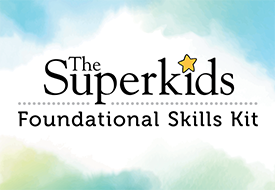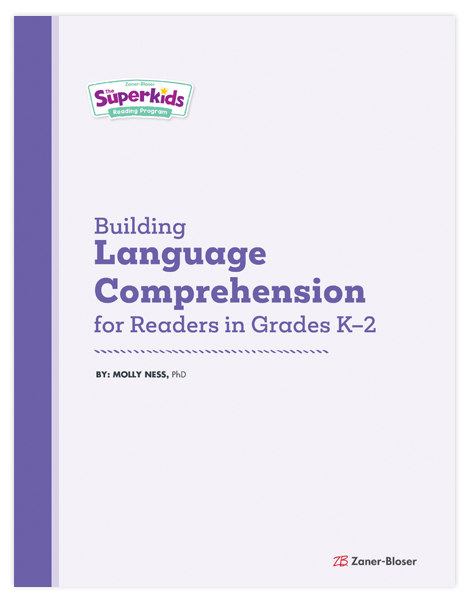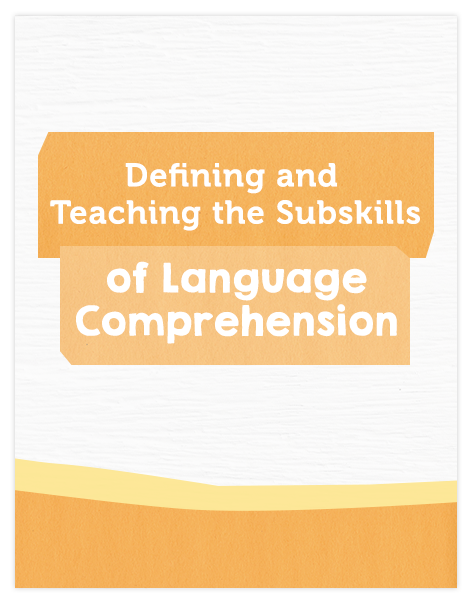
Discover the Science of Reading
Welcome to our Science of Reading Hub. First things first: What is the science of reading? The science of reading is an extensive and vast body of scientific research about reading—how children learn to read and how to teach reading.
At Zaner-Bloser, we recognize that each educator is at a different point in their journey to understand—and practice—the science of reading. The reading resources we have collected here in our Science of Reading Hub are meant to help you get to know the research and the concepts.
They are also meant to be shared and discussed. If you are championing the science of reading in your professional learning community, school, or district, we encourage you to use these science of reading resources, including videos, white papers, and other learning opportunities and to sign up to get our science of reading email updates.
Begin With the Basics
A vast body of research evidence collected over the past 40+ years—the science of reading— is both overwhelming and compelling. We know what it takes for reading development to occur.
This research reveals during reading and what needs to take place instructionally to enable skillful reading. Two prominent theoretical models help us start to make sense of how children learn to read: and .

Following the Research Promotes Equity and Increases Academic Success
Reading is the single most important skill—the foundation—for all future learning. Failure to read on level by third grade negatively impacts future academic success as well as social and emotional development. Phonics is critical, but phonics alone is not enough to give all students the foundation they deserve.
Watch Emily Hanford, senior correspondent at American Public Media, describe her reporting on issues of equity, reading achievement, and phonics at our Literacy for All Symposium in Denver, Colorado.

Choose a Reading Program Aligned With the Science
Instruction, curriculum, and high-quality instructional materials matter. The Superkids solutions from Zaner-Bloser help teachers put the science of reading research into practice.
Comprehensive English Language Arts Curriculum
The Superkids Reading Program © 2026 is a comprehensive English language arts curriculum crafted specifically for K–2 students and how they learn. The systematic, explicit instructional path solidifies foundational skills and builds knowledge to grow students’ confidence as readers.
Superkids inspires and motivates students from the start with a cast of relatable characters at the heart of the program. Their ongoing adventures, combined with evidence-based practices, set students on the right path to literacy success.
Targeted Phonemic Awareness, Phonics, and Fluency Instruction
The Superkids Foundational Skills Kit for grades K–2 can supplement any core reading program or complement a balanced literacy framework by providing targeted instruction in foundational literacy skills.
Daily word work includes skill practice and application in decodable text.
Daily Lessons and Intervention
The Superkids Phonemic Awareness curriculum for grades K–2 provides 180 daily lessons for building phonological and phonemic awareness skills—plus intervention activities.
Lessons are fun and playful, introduce skills with an I Do/We Do/You Do format, and complement any literacy curriculum.
More Reading Resources for Educators
Ready to go deeper? When schools ask us what research to read and how best to build the staff’s knowledge of the science of reading, we suggest the resources we’ve collected below.
Building Language Comprehension for Readers in Grades K–2
Scientific research highlights the instructional components that build language comprehension. In this paper, Dr. Molly Ness examines the subskills of language comprehension and provides implications for instruction.
The Science of Reading: Evidence for a New Era of Reading Instruction
With evidence-based instruction, nearly everyone can learn to read. We must rely on the vast body of research—the science of reading—to determine what to teach and how.
Building a Strong Foundation for Learning to Read
The roadmap for teaching children to read begins with the foundational skills: oral language, vocabulary, print concepts/letter knowledge, phonological and phonemic awareness, phonics, and fluency.
Building the Reading Brain
As studies from the fields of neuroscience and neuropsychology have accelerated, significant evidence has mounted underscoring the importance of reading basics for all students.
Preventing Reading Failure: The Right Instruction at the Right Time
What steps can educational leaders take to get ahead of reading failure? The answer lies in prevention.
The Science of Reading
This three-part Zaner-Bloser webinar series examines the “why,” “what,” and “how” of the science of reading. Learn about brain research, theoretical models of reading development, how evidence should inform instruction, and more.
Defining and Teaching the Subskills of Language Comprehension
In this webinar, we take a closer look at the essential subskills of the language comprehension side of the Simple View of Reading—background knowledge, vocabulary knowledge, language structures, verbal reasoning, and literacy knowledge.
The Pivots We Need in Reading Instruction
Presenter Kareem Weaver provides a cohesive understanding of what equity in reading instruction looks like today, advocating for major shifts in our mindsets and culture. Educators, families, and other stakeholders must work together.
Assessment for Learning: The Science of Screening
Early intervention for reading difficulties is critical for students’ future success. In this two-part webinar, we explore the “what” and “why” of using reading assessments for learning and hear lessons from the field.
Understanding and Applying the Science of Reading
In this five-part Zaner-Bloser webinar series, presenter Angela Cammarata explores how to effectively and joyfully teach phonemic awareness, phonics, fluency, vocabulary, and comprehension.
Introduction to Conceptual and Procedural Knowledge
Dr. Deb Glaser defines conceptual and procedural knowledge and introduces four conceptual models of how children learn to read, which inform teaching procedure.
The Simple View of Reading Model
See how the five components of reading—phonemic awareness, phonics, fluency, vocabulary, and comprehension—map onto the Simple View of Reading and how this model informs instruction.
Scarborough’s Reading Rope Model
Scarborough’s Reading Rope elaborates on the Simple View and illustrates the complexity of learning to read, which can be applied to procedures in the classroom.
Seidenberg and McClelland’s Four-Part Processor Model
See how the orthographic, phonological, meaning, and context processors activate in the brain during reading and what this model means for intervention.
Ehri’s Phases of Word-Reading Development
How do children develop reading through the pre-alphabetic, partial alphabetic, full alphabetic, and consolidated phases of word recognition during reading?
The Best Ways to Teach: Explicit and Systematic Instruction
When teaching the foundational skills for reading, the best way to teach them is explicitly and systematically. Dr. Glaser shares seven practices to look for in reading classrooms.
What the Words Say Audio Documentary
With her fourth audio documentary for APM Reports, Emily Hanford tackles false assumptions about reading that have created inequities for U.S. students.
At a Loss for Words Audio Documentary
Emily Hanford reports how teaching children to use cueing strategies to read persists in the U.S., despite their lack of basis in research.
Hard Words Audio Documentary
Emily Hanford made waves with her 2018 report about many educators’ lack of knowledge of the science of reading, balanced literacy, and the reading wars.
What Is Structured Literacy?
The International Dyslexia Association created an infographic to make the six elements and three principles of structured literacy easier to understand.
The Reading League
The Reading League’s mission is to advance awareness, understanding, and use of evidence-based reading instruction.
Consortium on Reading Excellence in Education (CORE)
CORE is a professional development provider committed to educational equity and reducing the achievement gap.
The activities provided are adapted from The Superkids Reading Program and free to use!
Phonological Awareness Practice
Help children understand that spoken language is made up of meaningful units of sounds with these activities. Appropriate for grades K–2.
Phonemic Awareness Practice
Provide practice to build children’s phonemic awareness—the understanding that a word is made up of a sequence of small units of sounds. Appropriate for grades K–2.
Phonics Practice with Letter-Sounds
These activities reinforce the correspondence between individual sounds in words (phonemes) and the letter(s) that stand for each sound. Appropriate for grades K–2.
Vocabulary Development Activities
These activities introduce children to new words that are interesting and useful in discussing texts, their own experiences, and the world around them. Appropriate for grades K–2.






















